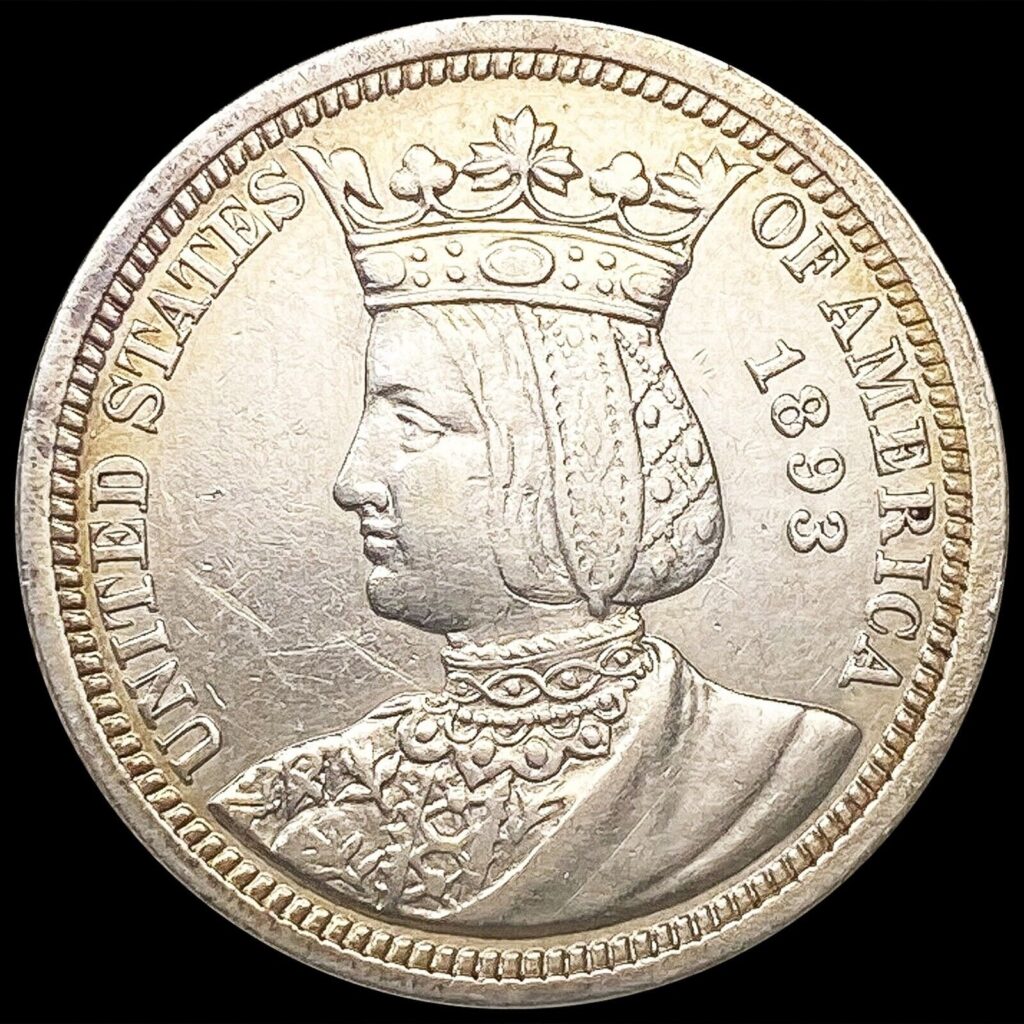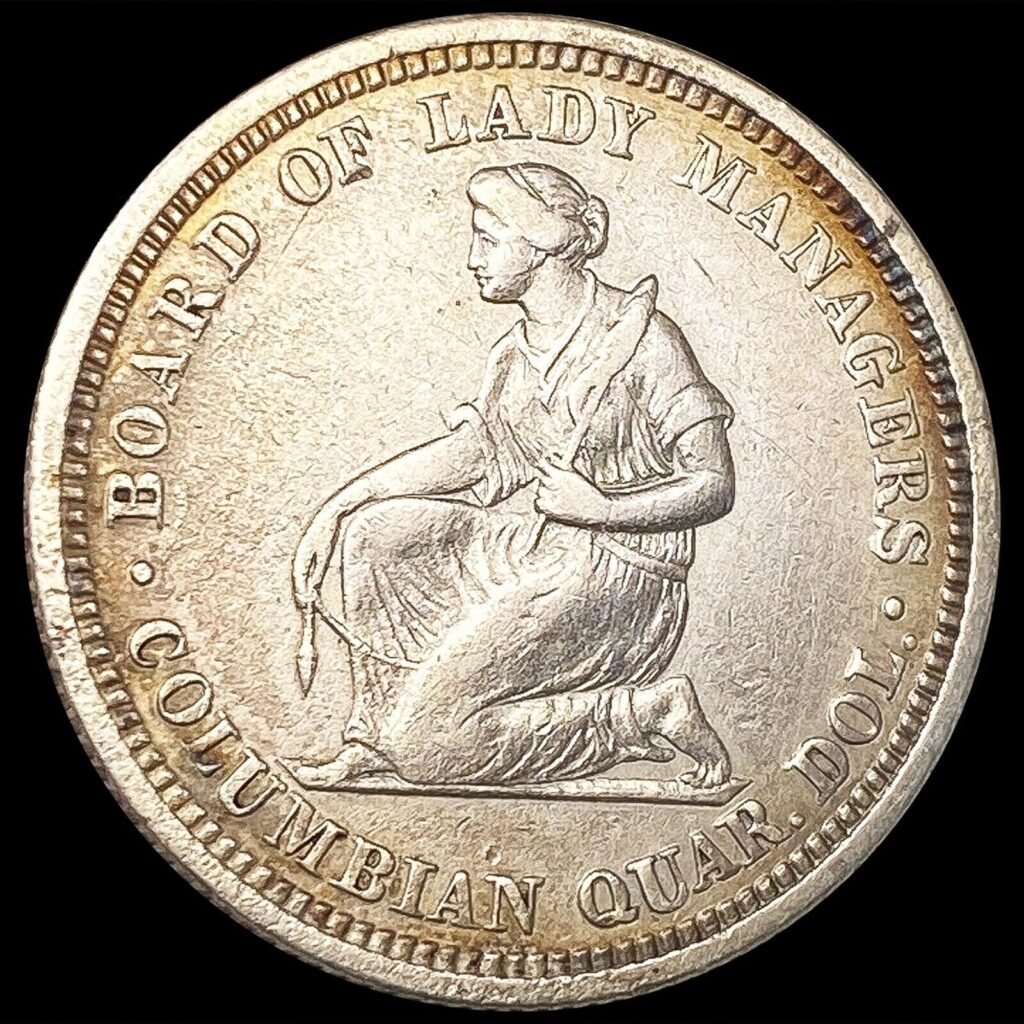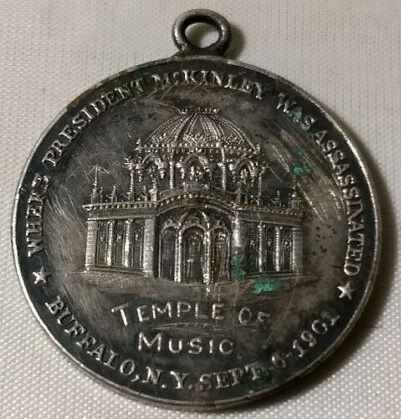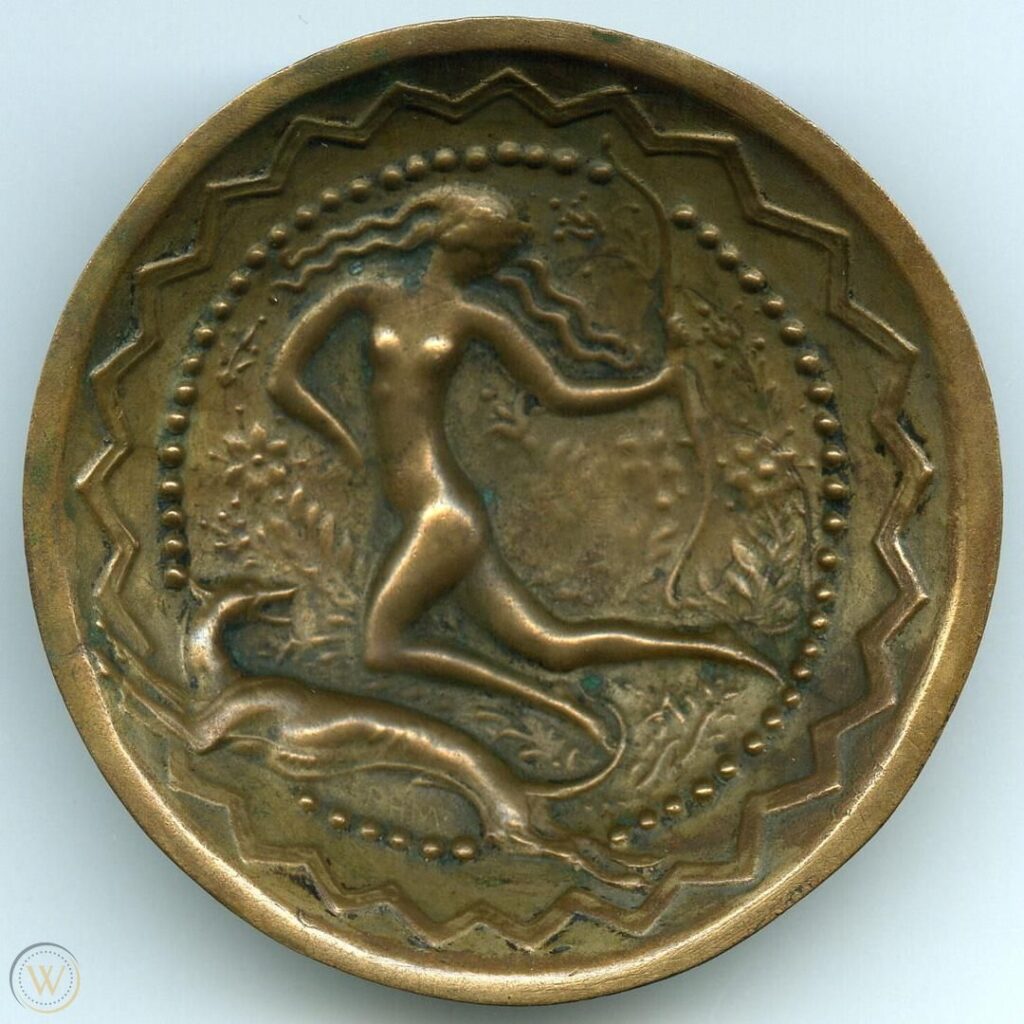Rare and Unique Medals from America’s Expositions and World Fairs offer a fascinating glimpse into the past and showcase the beauty and artistry of medal design. As a collector or admirer of historical artifacts, it is exciting to discover medals that are not only visually striking but also scarce due to their rarity or uniqueness. In this post, we will explore some of the rarest and most unique medals from America’s Expositions and World Fairs, including the 1893 World’s Columbian Exposition, the 1901 Pan-American Exposition, and the 1915 Panama-Pacific International Exposition. We will also provide an overview of other rare and unique medals from different expositions and world fairs, and explore their historical significance. By the end of this post, you will have a deeper understanding of why rare and unique medals are sought after by collectors and how they contribute to our understanding of the past.
II. Definition of Rare and Unique Medals
When it comes to medals from America’s expositions and world fairs, rarity and uniqueness are two key factors that make certain medals stand out from the rest.
A. Explanation of Rarity: Rarity refers to the scarcity of a medal, either due to low mintage numbers or the destruction or loss of medals over time. A rare medal is one that is hard to come by, making it highly desirable to collectors. Rarity can be determined by several factors, including the number of medals originally produced, how many still exist today, and the level of demand for the medal.
B. Explanation of Uniqueness: Uniqueness refers to the distinctiveness of a medal, either due to its design or its historical significance. A unique medal may have a design that differs significantly from other medals issued at the same event, or it may have been awarded to a specific person or group of people, making it one-of-a-kind. Uniqueness can also be determined by the historical significance of the medal, such as if it commemorates a major event or a significant technological or cultural achievement.
C. Explanation of How Rarity and Uniqueness Can Affect the Value of a Medal: Rarity and uniqueness can both have a significant impact on the value of a medal. A rare medal that is in high demand can fetch a high price on the collector’s market, while a unique medal that has historical significance may also command a high value. Collectors often seek out rare and unique medals as they are seen as prized possessions that add to the overall value of their collection. Rarity and uniqueness can also contribute to the sentimental value of a medal, as they make the medal feel more special and important.
III. The 1893 World’s Columbian Exposition
The 1893 World’s Columbian Exposition was held in Chicago to celebrate the 400th anniversary of Christopher Columbus’s arrival in America. It was a major event in American history and was attended by millions of people from around the world. The exposition featured exhibits showcasing technological innovations, cultural achievements, and natural resources from around the world.
A. Explanation of the Exposition: The World’s Columbian Exposition was one of the largest and most elaborate expositions of its time. It covered more than 600 acres and featured over 200 buildings, including the iconic “White City” that was adorned with neoclassical architecture and electric lighting. The exposition was a symbol of American progress and ingenuity, and it attracted millions of visitors who came to marvel at the wonders on display.
B. Description of the Rare and Unique Medals Issued: The World’s Columbian Exposition issued several medals, including official medals, commemorative medals, and award medals. One of the most rare and unique medals issued at the exposition was the “Isabella quarter,” a commemorative medal designed by Charles E. Barber that featured the likeness of Queen Isabella of Spain. The medal was intended to commemorate Columbus’s journey to America and was distributed as a souvenir to visitors. However, due to a lack of funding, only a few thousand medals were produced, making it one of the rarest and most sought-after medals from the exposition.


C. Historical Significance of the Medals: The medals issued at the World’s Columbian Exposition were not only beautiful works of art, but they also played an important role in commemorating and celebrating the historical significance of the event. The Isabella quarter, in particular, serves as a reminder of the importance of the Columbus voyage and its impact on American history. The rarity of the medal also adds to its significance, as it is a tangible symbol of the limited resources and challenges faced by the organizers of the exposition. Overall, the medals from the World’s Columbian Exposition are a valuable historical artifact that provides insight into the culture, art, and technological innovations of the time.
IV. The 1901 Pan-American Exposition
The 1901 Pan-American Exposition was held in Buffalo, New York, to showcase the cultural, technological, and economic achievements of the Americas. It was a significant event that brought together people from all over the world to celebrate the progress and diversity of the Americas.
A. Explanation of the Exposition: The Pan-American Exposition was a grand event that covered more than 350 acres and featured over 100 buildings. It showcased the latest technological advancements of the time, such as the first electric power plant at an exposition, as well as cultural exhibits highlighting the diverse traditions and customs of the Americas.
B. Description of the Rare and Unique Medals Issued: The Pan-American Exposition issued several medals, including official medals, commemorative medals, and award medals. One of the rarest and most unique medals from the exposition is the “Temple of Music” medal, designed by Buffalo sculptor Hermon Atkins MacNeil. The medal was issued to commemorate the assassination of President William McKinley, who was shot at the Temple of Music exhibit during the exposition. The medal features an image of the Temple of Music and a profile of McKinley, and it was only issued for a short time before being replaced by a different design. Also see HK-290 1901 Pan-American Exposition President McKinley Assassination SCD here.

C. Historical Significance of the Medals: The medals from the Pan-American Exposition serve as a reminder of the cultural and technological achievements of the Americas at the turn of the 20th century. The “Temple of Music” medal, in particular, is a poignant reminder of the tragedy that occurred during the exposition and the impact it had on American history. The rarity of the medal also adds to its historical significance, as it is a tangible symbol of the limited production and distribution of medals during the time period. Overall, the medals from the Pan-American Exposition are a valuable artifact that provides insight into the cultural and historical context of the event.
V. The 1915 Panama-Pacific International Exposition
The 1915 Panama-Pacific International Exposition was held in San Francisco, California, to celebrate the completion of the Panama Canal and to showcase the achievements of the Western United States. It was a major event that attracted millions of visitors from around the world.
A. Explanation of the Exposition: The Panama-Pacific International Exposition was held on a 635-acre site in San Francisco and featured more than 80 exhibit palaces and pavilions. The exposition showcased the latest advancements in technology, agriculture, and the arts, and included exhibits from more than 20 countries.
B. Description of the Rare and Unique Medals Issued: “Diana” medal, issued several medals, including official medals, commemorative medals, and award medals. One of the rarest and most unique medals from the exposition is the “Diana” medal, designed by sculptor Robert Aitken. The medal features an image of the goddess Diana with a bow and arrow, and it was awarded to artists for their contributions to the fine arts exhibit at the exposition. Only 50 of these medals were issued, making them highly sought after by collectors.

C. Historical Significance of the Medals: The medals from the Panama-Pacific International Exposition represent a significant cultural and historical event in American history. The “Diana” medal, in particular, is a testament to the importance of the arts in American culture and the recognition of artists for their contributions to society. The rarity of the medal also adds to its historical significance, as it serves as a reminder of the limited production and distribution of medals during the time period. Overall, the medals from the Panama-Pacific International Exposition are a valuable historical artifact that provides insight into the art, culture, and technology of the time period.
VI. Other Rare and Unique Medals
In addition to the rare and unique medals issued at the World’s Columbian Exposition, the Pan-American Exposition, and the Panama-Pacific International Exposition, there are many other rare and unique medals from various expositions and world fairs that are highly sought after by collectors.
A. Overview of Other Rare and Unique Medals from Various Expositions and World Fairs: Some examples of other rare and unique medals include the “Oscar Roty” medal from the 1900 Paris Exposition, the “Buffalo” medal from the 1904 St. Louis Exposition, and the “Century of Progress” medal from the 1933 Chicago World’s Fair. Each of these medals features unique designs and historical significance that make them highly collectible.
B. Explanation of the Historical Significance of Each Medal: The “Oscar Roty” medal from the 1900 Paris Exposition was designed by French artist Oscar Roty and features a depiction of the Republic of France. It was issued to commemorate the achievements of the French Republic and the success of the exposition.
The “Buffalo” medal from the 1904 St. Louis Exposition features a buffalo on one side and a Native American on the other, and it was issued to commemorate the importance of the buffalo in American history and the cultural contributions of Native Americans.
The “Century of Progress” medal from the 1933 Chicago World’s Fair features an image of the fair’s theme, the “Century of Progress,” and it was issued to commemorate the technological advancements and cultural achievements of the 20th century.
C. Analysis of Their Rarity and Uniqueness: Each of these medals is unique in design and historical significance, and their rarity adds to their value and desirability among collectors. For example, the “Oscar Roty” medal is rare due to its limited production and the historical significance of the artist, while the “Buffalo” medal is rare due to its unique design and limited distribution. The “Century of Progress” medal is rare due to its association with a major cultural event and the limited production of commemorative medals during the Great Depression.
Overall, these rare and unique medals offer a window into the culture, art, and history of their respective time periods and events, and they are highly valued by collectors for their beauty and historical significance.
VII. Conclusion
In this post, we explored some of the rarest and most unique medals from America’s expositions and world fairs, including the 1893 World’s Columbian Exposition, the 1901 Pan-American Exposition, and the 1915 Panama-Pacific International Exposition. We also provided an overview of other rare and unique medals from different expositions and world fairs, and explored their historical significance.
Collectors and admirers of rare and unique medals are drawn to these artifacts for their beauty and historical significance. The rarity and uniqueness of these medals add to their value and make them highly sought after by collectors. The medals from America’s expositions and world fairs are a tangible reminder of the cultural, technological, and artistic achievements of their respective time periods, and provide valuable insight into the historical context of these events.
It is important to preserve these medals for future generations so that they can continue to appreciate and learn from them. As time goes on, these medals become increasingly rare, and their historical significance only grows. By preserving these artifacts, we can ensure that they remain a valuable part of our cultural heritage and continue to inspire and educate future generations.
In conclusion, the rare and unique medals from America’s expositions and world fairs are valuable historical artifacts that offer insight into the culture, art, and technology of their respective time periods. Their rarity and uniqueness add to their value, making them highly prized possessions among collectors. It is important to preserve these medals for future generations so that they can continue to appreciate and learn from them.